Guambiano

In mid October after five weeks at Fundación Viracocha, the time felt right to leave and explore other parts of Colombia. I had really enjoyed my time there and left with a huge amount of gratitude for the people and the place, with great respect for this wonderful project and with a sense of excitement to see more of the country. It was difficult to leave in many ways and at the same time it had been difficult to see people come and go and it was very naturally my time to go, for now. I left San Agustin as I had arrived;with friendly local folks this time in a packed colectivo.
After a year of travelling I was feeling really very tired and in need a kind of a different pace and a more fun relaxing adventure. This desire led me to my first stop: Aguas Hirviendos (it literally means boiling water) one of the thermal bath located near Cokonuko. Thankfully the water was wonderfully hot, because as an altitude of 2500metres it gets cold there at night. The baths are managed by the local indigenous community and are located on a sacred indigenous site. I spent hours and hours relaxing, and relaxing some more in the sulphur baths. I found myself giving thanks for this amazing journey; remembering highlights along the way, giving thanks for people and places and then calling in a new pace as I move forward. It felt like a good and proper transition into a new stage of my journey: the year that I said I would do was up, I planned to continue, and here I was embarking on what I planned to be a gentler more easy-going journey. I found myself deeply praying to the spirits of the land and the water the air and the sun/stars. The baths are open 24hours so I stayed till very late with my dedications and then I got up before dawn to sit in the piping hot waters and watch the sunrise. This was my way of making a promise to myself to take it easy. I enjoyed the quiet of the baths at night, the starry sky, the crisp cold and the sounds of a different part of the country that I am really falling for.
Paintings at Aguas Hirviendos, Coconuko
After completing my prayers, from Coconuko I travelled to the beautiful town of Popayán. My plan was to explore it and some surrounding areas for a few days and take some time to write. I ended up spending a week just soaking up the place and enjoying speaking to people and making new friends. One Tuesday morning I decided to go the market town of Sylvia to learn about the Guambiano or Misak, these are an indigenous people that mostly live in the Cauca department of Colombia. They speak their own language, Guambiano which one of , what is called, the Coconucan languages. They are a group of about 12,000 people mostly that live in the mountain villages of Pueblito, La Campara, Guambia and Caciques. They gather in the town of Silvia, an hour and a half from Popayán, every Tuesday to sell vegetables, fruit and their traditional craftwork including beautiful weaving, jewellery and traditional bags. Agriculture is the base of their economy and Coffee, cassava, potatoes, beans, and cabbage are among the main crops that they grow and sell.
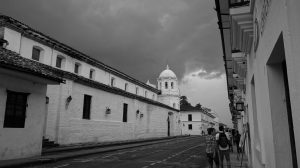
Street in Popayán
I had read little really about these people and was unsure really what to expect: what I knew was that the Guambiano are noted as being one of the most traditional of indigenous groups in Colombia and did not like to have their photo taken. It was not a lot to go on. I arrived feeling self conscious to be a tourist and warily walked from the bus stop to check out the market stalls. I really can’t fool anyone though: I’m not a ‘market person’. Quite honestly I feel overwhelmed by markets and only go to take in the colours of fruits veg and textiles for brief periods, then I seek shelter. And on a very practical level I have been hauling a heavy back pack and have no home to put anything that I might buy in – so I tend to browse and then find a place to have a cuppa and watch the world go by. Within the first half hour I realised that these people were well used to tourists and really took little or no notice of me. I felt comfortable.

View over Sylvia
There was a mix of local villagers, tourists and the Guambiano. Really, there were so many of them and it was a stunning sight to behold: all of them dressed in their tradition clothes: the women wear a black skirt, a white or solid colour top, blue/purple and cerise scarf, and dark bowler hat or simple flat hat. The men wear a blue scarf (worn as a sarong), rectangular ponchos, and black bowler hat and. I so enjoyed seeing them and was curious about why it is that they all wear exactly the same clothes, many, right down to the same shoes.
Guambiano in traditional clothes – (Out of respect I did not take photos of them – these particular photos are borrowed from the internet)
I did get talking to a friendly artesano (selling stunning filigree jewellery that I admired with no intention of buying) in the square. We chatted and he got that I was not a buyer but we had a common interest in the Gambiano and seeing their village so we arranged to travel up to one of the local traditional villages: Guambia later in the day. I rambled and bought some fruit and veg, drank coffee, ate local arepa’s (a type of corn cake) and soaked up this lovely little village for a few wonderful hours chatting to locals. Later my new friend and I took local moto-taxis up to Guambia where we were met by an unexpected and gobsmacking scene of hundreds of traditionally dressed Guambiano gathered for the funeral of a community member. The people sat quietly as, what sounded like a radio announcer shouted and sang in a very passionate manner. The community gently sat and listened and there was a quiet hum of respectful conversation, beneath the blasting din. This is an interesting point about south America and Central Americans in general; they have a HUGE tolerance for noise – its something that always surprises me – it is a challenge to find quiet places usually there is music playing, a radio blaring, dogs barking or a local person with a loudhailer announcing some sale or show. Later we discovered that it was a local radio presented who had recently been killed in a motorbike accident and it was a radio friend who was paying him homage.
We went to the local village, which was very quiet given that everyone was at the funeral and I was curious to see how orderly everything was and how well developed their buildings were. We got to see their lovely gardens, their community centre and some of their traditional houses; built from local clay.
“The misak maintain old traditional customs such as minga (communal work, people gather together to accomplish certain tasks, planting, harvesting etc) and characters like the murbik, who knows the uses of medicinal herbs ad plants and conducts the cleansing ceremonies pishimaruk…. They have a strong tradition of music using flute and drum ensembles and it is from this that the Cauca “chirimia” comes from.”
Images from Guambia
The Guambiano community act as a separate country really within Colombia; with their own laws and even their own prison system. They function within their own rules of law on their own land. It is a dfferent kind of Eco-community. Their land is said to contain gold and of course many mining companies want access to it and have approached the Guambiano who have flatly refused. Their land is precious and they know that the preciousness lies in its natural beauty above and the precious land below. This land of theirs, or the areas that I could see from the village and travelling there is utterly stunning, healthy and unspoiled. This health is seen in the pristine waters of their rivers, the clean air and in the food that they grow and eat.. this is their wealth and the wealth of their future generations and they take car of it.
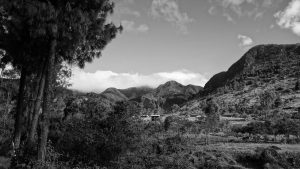
The stunning land around Guambia and Sylvia
This is a different way to live for sure. I have really wanted to visit indigenous communities on this journey and this is my first. This time I was only an observer as my visit was brief, but I do hope to explore some more and get to experience first hand what life is like in these communities where life really hasn’t changed all that much for centuries. I’m curious to learn what keeps them in community and how they perceive the rest of us.
This is just a brief instalment for now but I will be writing more about my journey through Colombia soon.
My project of exploring community is fully supported through my creativity: through the sale of my art and by a virtual online community through crowd funding. If you would like to support me on this journey you can check out my art on www.sineadcullen.com or make a donation on my Crowd funding campaign https://www.gofundme.com/LetsCreate or through PayPal by using my email address: sinead.a.cullen@gmail.com
REFERENCES




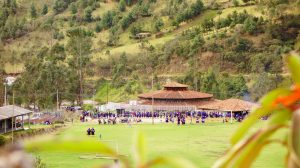
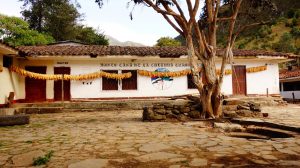
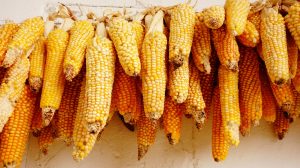

Recent Comments